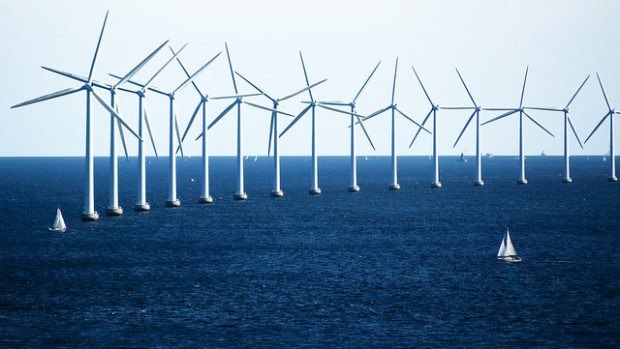On June 2, the Environmental Protection Agency took a bold step in putting forth the first-ever proposed standards to reduce carbon pollution from power plants, which account for about 40 percent of total U.S. emissions. This historic step marks a milestone in efforts to rein in carbon pollution and keep our planet safe for people and wildlife.
However, EPA’s proposed rule should be strengthened to ensure we rapidly advance the transition to a clean energy economy. This is a critical moment, and we’re running out of time to save wildlife from catastrophic runaway climate change.

Opening the Door for Renewable Energy
Under the Clean Air Act, EPA calculated 49 states’ “best system of emissions reduction” (Vermont was exempted because it does not have any fossil fuel power plants) to arrive at a carbon intensity reduction rate (pounds of CO2 emitted per unit of energy generated) for each state’s fossil fuel power plants. When implemented, EPA estimates that its current proposed standards will reduce carbon pollution 26% below 2005 levels by 2020 and 30% by 2030. States will have flexibility to craft their own path to the reduction goal, which much be approved by EPA.
EPA started with a baseline for each state based on 2012 emissions from fossil fuel plants, reduced by discounting for nuclear and renewable generation. Then EPA used the following four building blocks to reach each state’s emissions reduction target:
- Heat rate improvements at coal plants
- Increased use of existing or under-construction combined cycle natural gas plants to 70% of capacity
- Increased use of low and zero-emitting energy sources (e.g. renewables)
- Increased end-use efficiency measures to reduce overall demand for energy
By looking broadly at the entire power generation sector – and not just fossil fuel plants – EPA has smartly opened the door for clean energy solutions to be advanced.
But while EPA adopted the right overall approach, the formula it has employed for determining potential reductions from increased use of renewable energy leaves an enormous amount of affordable and achievable carbon pollution reduction on the shelf.
Improving the Math
In creating each state’s emission target, EPA made assumptions about what is reasonably achievable in terms of deployment of renewable energy which are unnecessarily conservative, and in some cases put artificial constraints on the growth rate for states that may have much more growth potential.
EPA grouped states into six regions and then assumed that each state would only increase renewable energy at a level based on the average Renewable Portfolio Standard requirements currently in place in that region. Renewable Portfolio Standards are policies many states have in place that set goals for a certain percentage of the state’s energy mix to come from renewable sources.
EPA’s averaging underestimates the potential to achieve deep and fast reductions in emissions through rapid growth of renewable energy sources. In fact, the formula EPA uses is so tepid that it results in setting potential rates for renewable generation in Iowa, Maine, Minnesota, North Dakota and South Dakota that those states have already exceeded.
Surely EPA can use a formula that assumes states can do at least as well as they are already doing.
EPA Should Use Standards That Take Advantage of Untapped Renewable Energy Potential
Renewables are America’s greatest untapped energy generation source, and they are ripe for greater development. The proposed rules should better recognize the tremendous gains possible in renewable energy and the resulting carbon pollution reductions that can be obtained.

This has to change for wildlife to have a chance in a warming world.
The potential for greater reductions from increases renewable generation is great. The National Renewable Energy Laboratory estimated that untapped offshore wind resources in this country are so abundant they could power the entire country. Yet, not a single turbine spins off our coasts, though progress is being made. The Department of Energy also estimates that all U.S. electrical energy needs could be met by potential onshore wind resources in Texas and the Dakotas alone. Likewise, due to rapidly decreasing costs, solar was the fastest growing new source of electrical generation in 2012.
With such room and potential for growth, it is folly to assume that most states should only do a little and some states have already done more than enough to grow renewable sources of energy and further cut carbon pollution emissions.
The clean energy future needs to start now. Ensuring the carbon rules more accurately accounts for renewable energy potential will go a long way in making that happen.
![]() Speak up for wildlife: tell the Environmental Protection Agency that you support the ground-breaking limits on carbon pollution from existing power plants!
Speak up for wildlife: tell the Environmental Protection Agency that you support the ground-breaking limits on carbon pollution from existing power plants!
 Offshore Wind Energy
Offshore Wind Energy 

